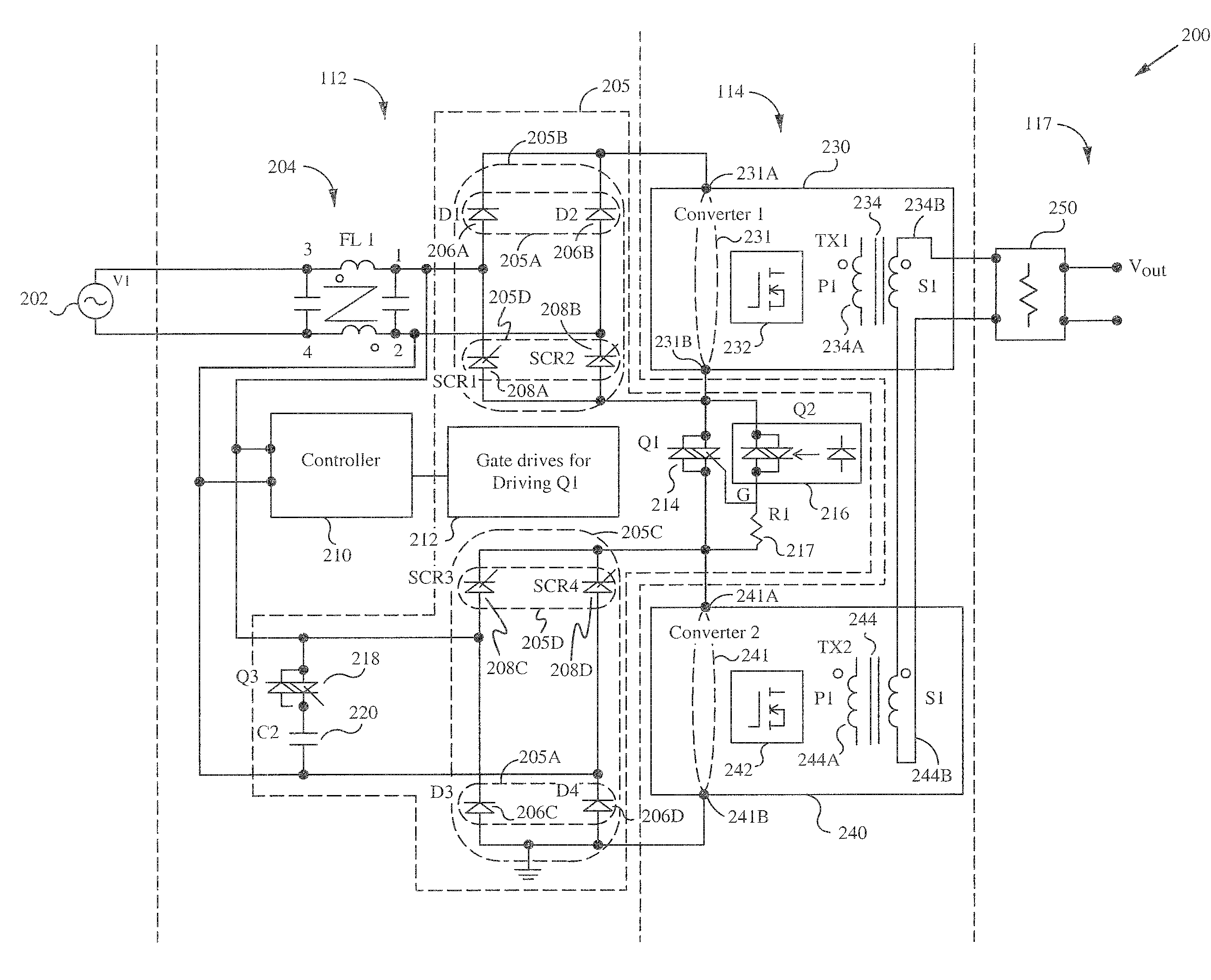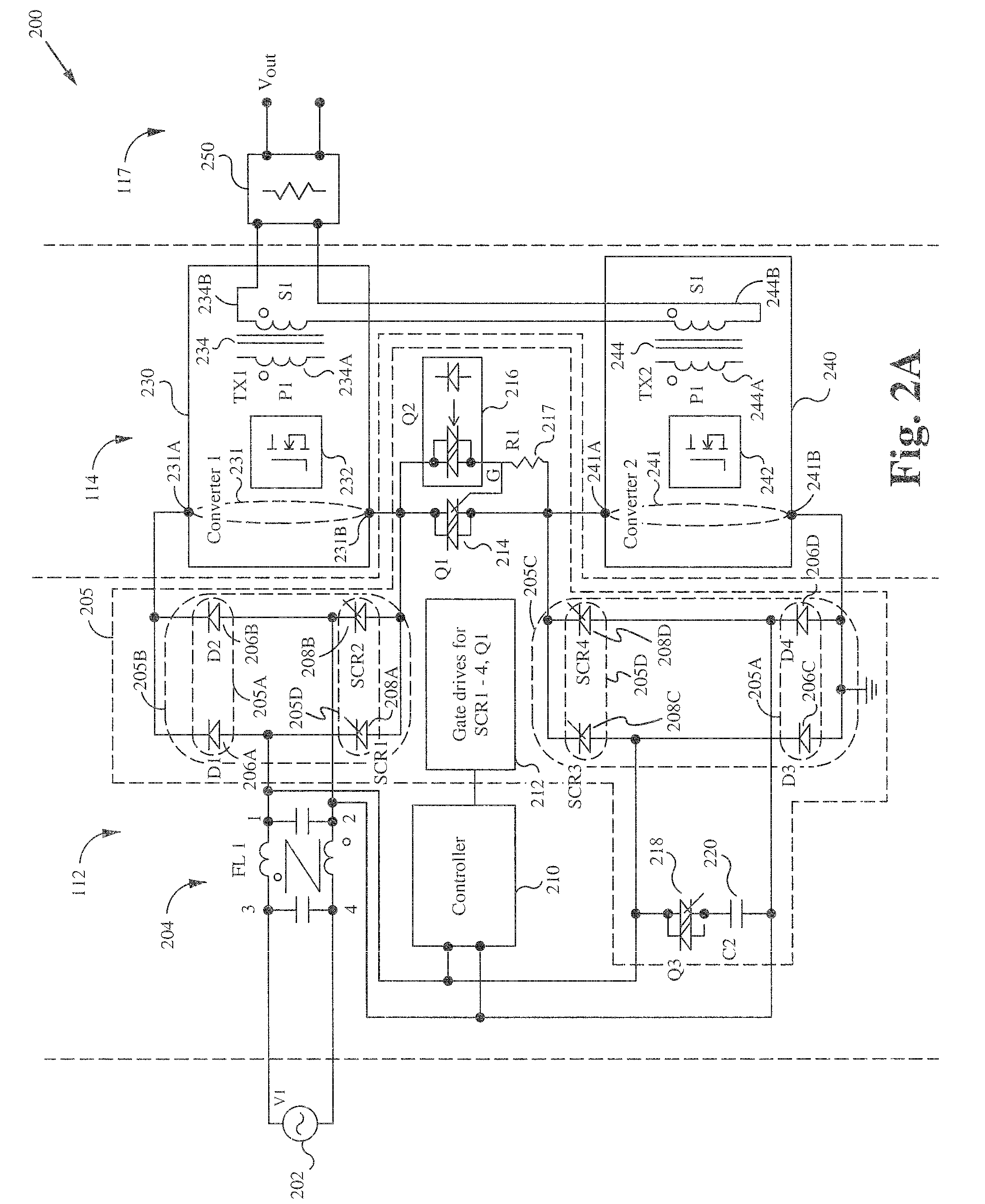Line switcher for power converters
a technology of power converters and switchers, which is applied in the field of power supplies, can solve the problems of increasing the loss of converters, irreparable damage, and uncertain and undesirable functioning of circuits, and the cost of the main switching semiconductors of conventional ac to dc converters
- Summary
- Abstract
- Description
- Claims
- Application Information
AI Technical Summary
Benefits of technology
Problems solved by technology
Method used
Image
Examples
Embodiment Construction
[0029]In the following description numerous details and alternatives are set forth for the purpose of explanation. However, one of ordinary skill in the art will realize that the invention can be practiced without the use of these specific details. In other instances, well-known structures and devices are shown in block diagram form in order not to obscure the description of the invention with unnecessary detail.
[0030]The present invention uses thyristors and intelligent sensing and switching schemes to provide fast switching from low-line (85 VAC-132 VAC) to high-line (180 VAC-264 VAC). The present invention takes advantage of the similar voltage drop between a diode and an SCR to provide a low-cost switcher which has an efficiency close to that of a traditional input rectifier. Although the cost of the thyristors is higher than that of a diode, the additional costs are offset by the costs of designing a wide-input-voltage-range converter above a nominal power level. For example, a...
PUM
 Login to View More
Login to View More Abstract
Description
Claims
Application Information
 Login to View More
Login to View More - R&D
- Intellectual Property
- Life Sciences
- Materials
- Tech Scout
- Unparalleled Data Quality
- Higher Quality Content
- 60% Fewer Hallucinations
Browse by: Latest US Patents, China's latest patents, Technical Efficacy Thesaurus, Application Domain, Technology Topic, Popular Technical Reports.
© 2025 PatSnap. All rights reserved.Legal|Privacy policy|Modern Slavery Act Transparency Statement|Sitemap|About US| Contact US: help@patsnap.com



